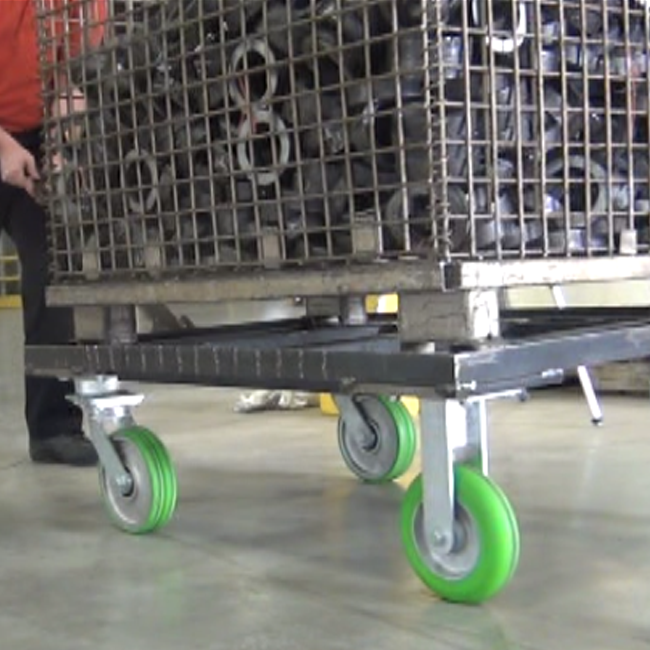

After getting the above question frequently, the next question usually asked is, “Why would the weight capacity be different, and which one is accurate?
The answer is both. We accurately state the maximum capacity for any given Caster Series on our website and catalog. From there, you can decide which wheel size and wheel material would be best for your application. However, different wheel sizes and wheel materials change the capacity of a caster. This is an important point to consider, especially when not all of your caster wheels are touching the ground at the same time.
A common cart setup will have four casters (4-wheel diamond pattern shown), but keep in mind that 3 points make a plane. So, if you have an uneven floor, expansion cracks, or pitting, your carts could have only three casters on the ground at any given time. An everyday example would be a grocery cart with one wheel off the ground and freely spinning as you push it. This is why adequately supporting your load if only three casters are touching is crucial.
This brings us to the topic of accurately determining capacity. Since the weight of a cart isn’t always distributed across all four casters, always include a margin of error. We recommend an additional capacity rating of 33% to the load weight for safety. Adding the extra weight capacity allows more pressure to go on one wheel and lessens the chance of failure.
For example, your caster may have a weight capacity of 3,000 pounds, which would equal a 12,000 lb. cartload with four wheels. However, by adding in the safety factor of 33%, you might end up needing a higher capacity wheel. So the weight capacity stated on our catalog or website is correct. But adding in the safety factor may push your needed capacity higher. This means the recommended capacity you get from your sales rep may be different than the caster’s stated capacity.
Whether you talk with me or anyone else on the sales team, we take this factor into consideration. However, we may not always explain our thought processes. Occasionally our customers will tell us that we are trying to “up-sell” them or sell them something that is more than what they need. I assure you this is not the case. The reason we are doing this is to make sure that your caster is not going to fail you.
When looking for an ergonomic solution to lower push/pull forces, consider other factors besides capacity. For example, increasing wheel size will make a cart easier to push, as well as using a harder polyurethane. The point is, making a cart easier to push deals more with performance capabilities than weight capacity.
And if your caster application is going to be using spring-loaded casters or Modern Suspension casters, then you are not going to need to take the additional capacity rating into consideration. The casters will have deflection up and down in order to maintain contact with the ground. Additionally, not all caster applications need 4 casters. If you have a large cart or are supporting heavier weight with multiple casters, please contact your sales rep to further discuss and make sure that enough safety factor has been considered.
See the video here:
Why is the listed capacity different than what you’re telling me?